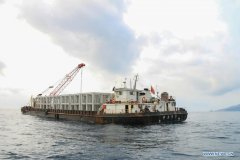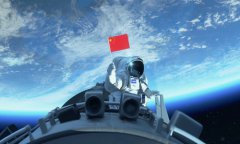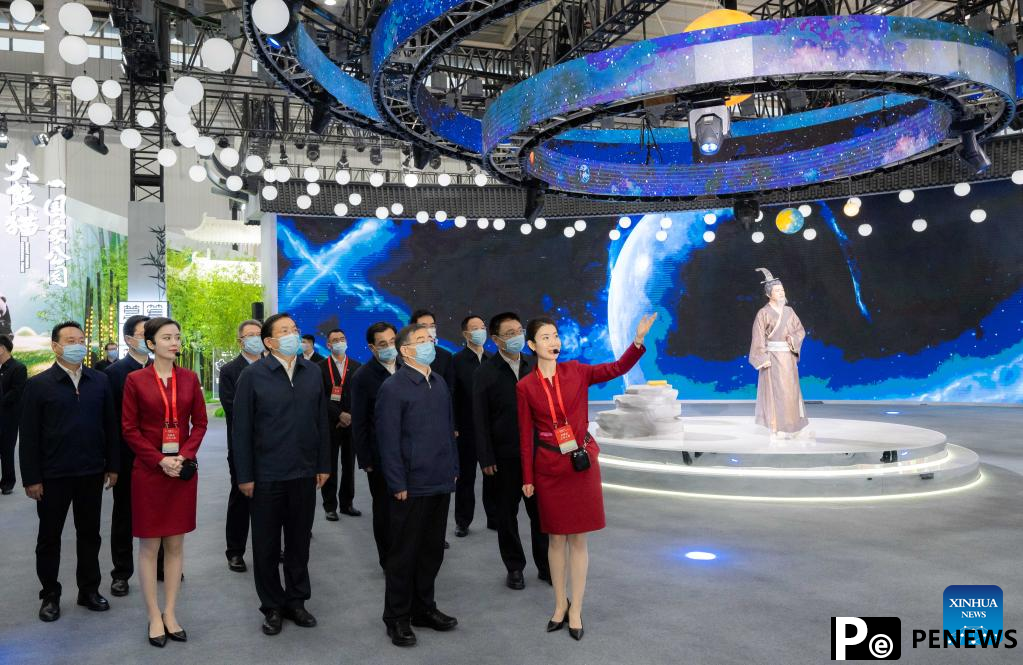Home>>
China writes new chapter in space explorationBy Feng Hua, Liu Shiyao (People's Daily) 08:52, April 27, 2023
The China National Space Administration (CNSA) and the Chinese Academy of Sciences on April 24 jointly released a series of global images of Mars obtained during China's first Mars exploration mission.
These color images are based on 14,757 image data acquired by a remote-sensing camera on the Tianwen-1 orbiter. Scientists identified a large number of geographical entities near the landing site from high-resolution images of Mars.
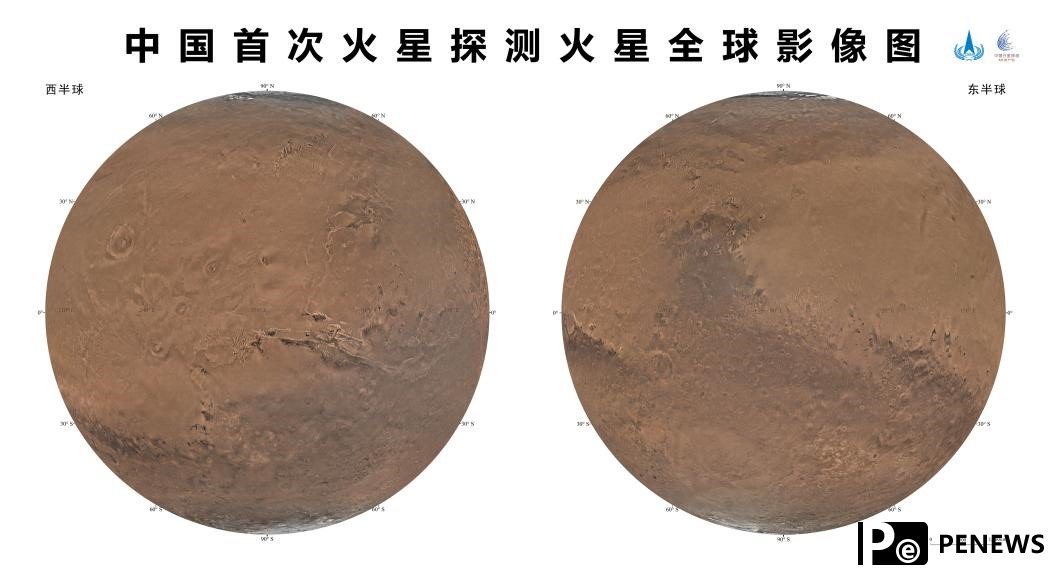
Photo shows the orthographic projection of the eastern and western hemispheres of Mars obtained during China's first Mars exploration mission. (Photo from the website of the China National Space Administration)
The International Astronomical Union has named, according to relevant rules, 22 of the geographical entities after the historical and cultural villages and towns in China with a population of less than 100,000.
The scientific exploration data obtained by the Tianwen-1 mission will make a contribution to human's in-depth knowledge of Mars.
In 2022, China set a new record with 64 rocket launches, achieving remarkable results in its major aerospace projects.
The country has completed the construction of its Tiangong space station, and for the first time discovered the Changesite-(Y), a kind of colorless transparent columnar crystal, on the moon.
It completed the space-segment construction of its Gaofen project, the backbone network of its high-resolution Earth observation system, and a comprehensive solar observation network has been formed following the launches of the Xihe and Kuafu-1 satellites.
Besides, the country has launched a terrestrial ecosystem carbon monitoring satellite for its carbon peaking and neutralization efforts.
These remarkable achievements record China's unremitting pursuit of the aerospace dream.
Exploring the universe is a dream of the Chinese people and a common pursuit of all mankind. Zhang Kejian, head of the CNSA, noted that China, following the principle of equality, mutual benefit, peaceful utilization, and inclusive development, has initially built a model of international cooperation in the space industry with cooperation agreements as the guide, cooperation mechanisms as the backbone and cooperation outlines as the focus.
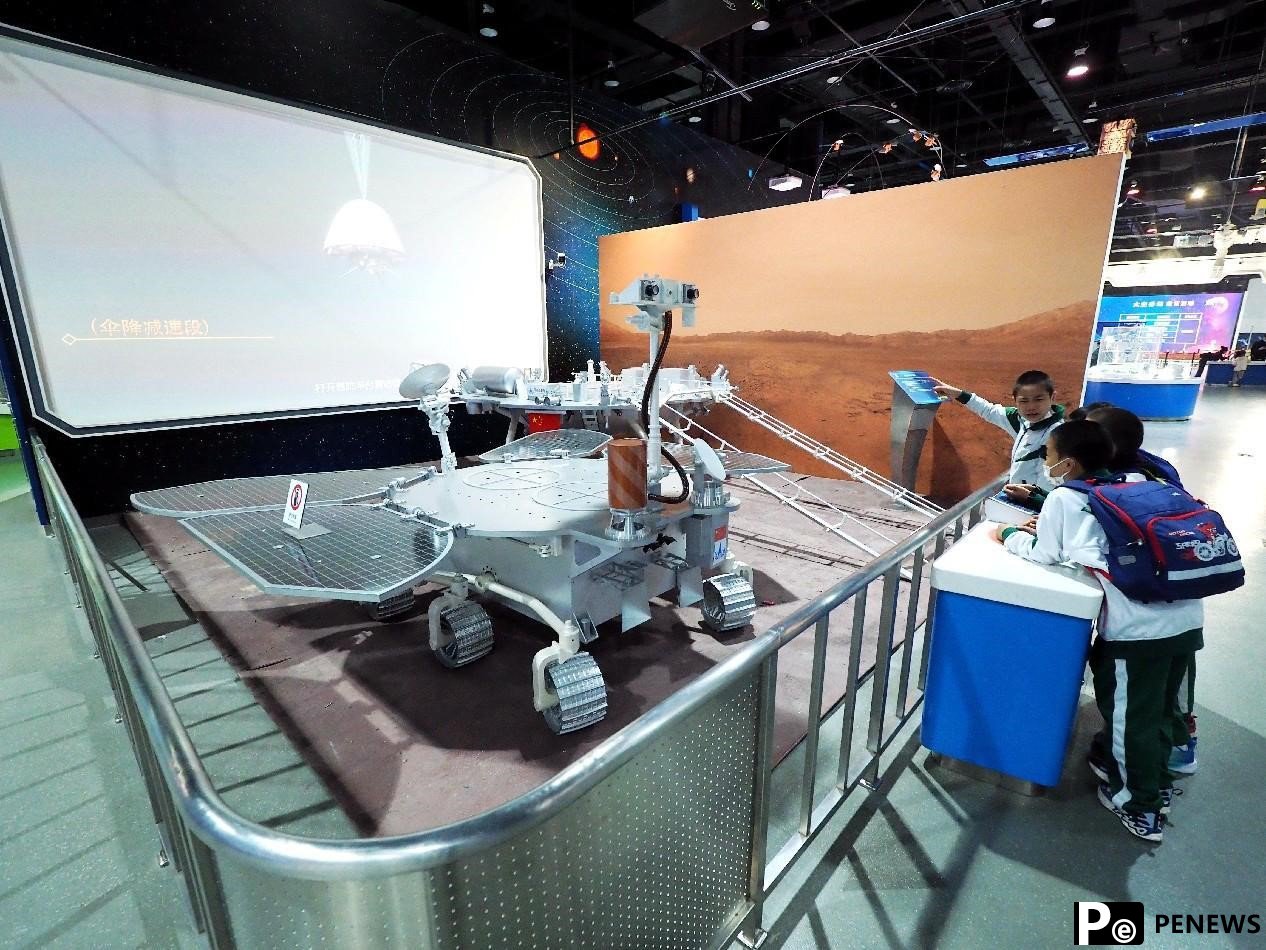
A model of the Tianwen-1 probe is exhibited in the China Science and Technology Museum, Beijing, April 12, 2023. (People's Daily Online/Du Jianpo)
The model has formed a good situation with government guidance and the participation of all parties, Zhang added.
Over the past 30 years since the CNSA was established, China has signed 136 cooperation documents with 43 countries or regions and 6 international organizations. It has inked space cooperation outlines with 9 national space agencies, and established 17 space cooperation mechanisms.
China has actively worked with international scientists to analyze data on lunar and Mars explorations in the new era. China's Long March rockets have completed 52 commercial launches for 22 countries, regions and international satellite organizations, sending some 70 satellites of various types into orbits.
The CNSA-led China-Brazil Earth Resources Satellites program, Double Star space mission, China-France ocean-observing satellite and astronomical satellite programs, as well as China-Italy seismo-electromagnetic satellite project have become highlights of international aerospace cooperation.
China will strive for steadier and greater progress in space exploration. According to Wu Weiren, chief designer of China's lunar exploration program, the fourth phase of China's lunar exploration program, including the Chang'e-6, Chang'e-7, and Chang'e-8 missions, is in progress.
Wu said that China plans to launch the Chang'e-6 probe around 2024 in an attempt to collect some 2,000 grams of lunar samples from the far side of the moon and return them to Earth. Besides, the Chang'e-7 probe is expected to be launched around 2026, which is intended to land on the moon's south pole and conduct detailed surveys to explore traces of water.
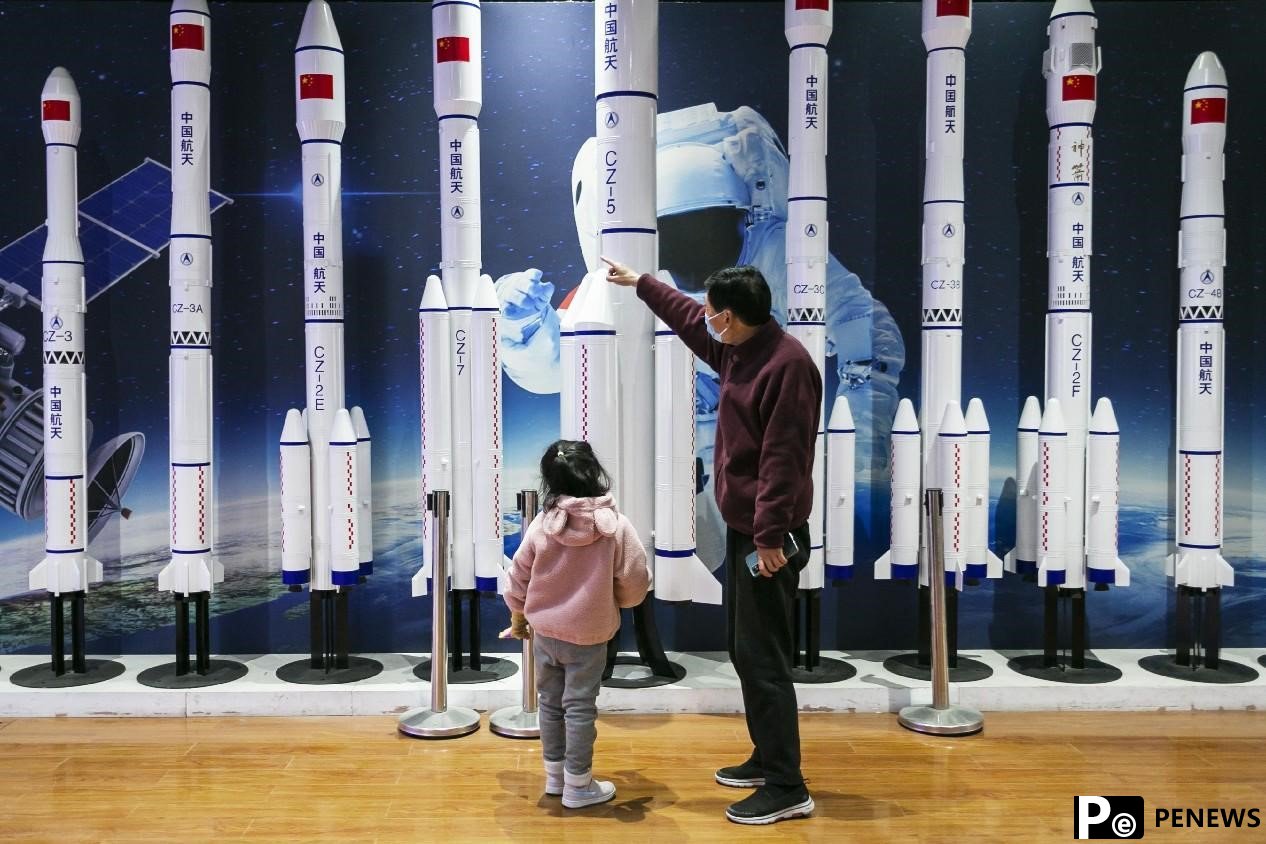
Citizens visit an aerospace exhibition hall in Yuncheng, north China's Shanxi province, April 24, 2023. (People's Daily Online/Jiang Hua)
Wu noted that China will work to make breakthroughs in key technologies of the Chang'e-8 mission, and jointly promote the establishment of the International Lunar Research Station (ILRS) with relevant countries, international organizations and partners.
The Chang'e-8 mission, which is expected to be launched around 2028, will complete the basic structure for the ILRS on the moon's south pole together with the Chang'e-7 mission. There would be a lunar orbiter, lander and rover as well as a range of scientific detection devices, Wu added.
This year, the Tiangong space station has officially entered a phase of application and development, where Chinese astronauts will be on permanent duty according to the mission.




